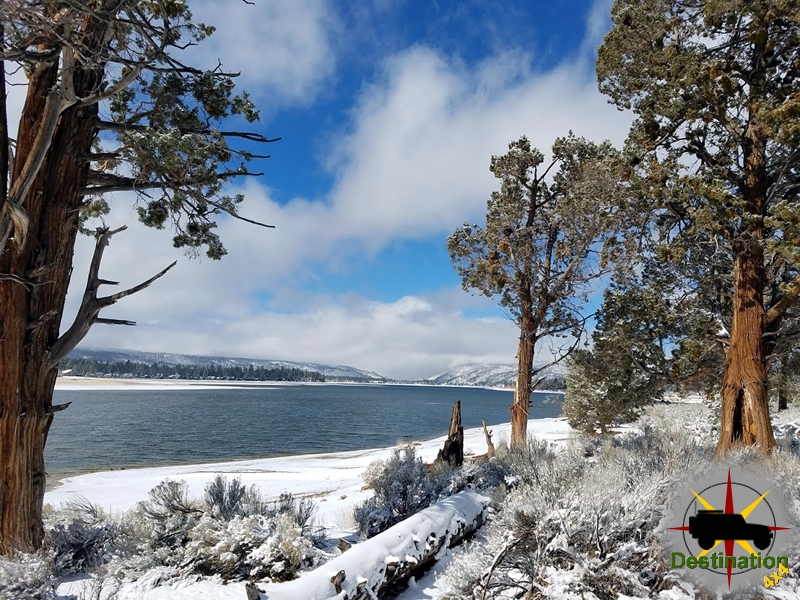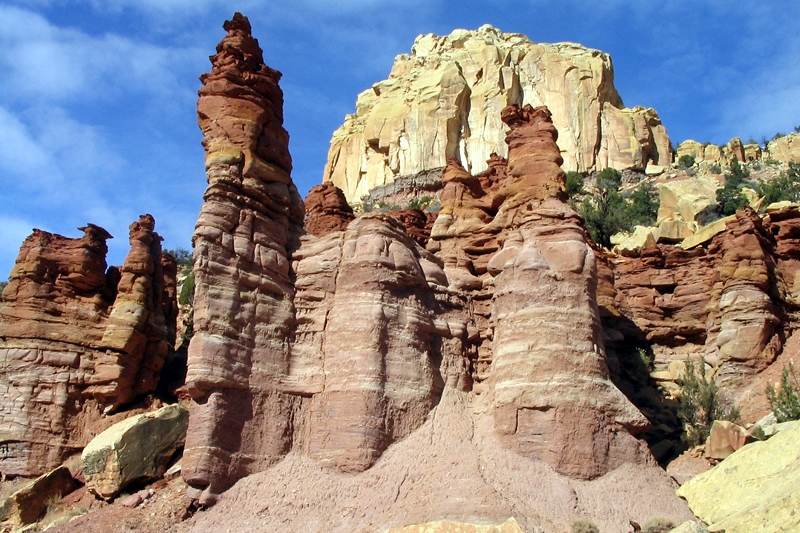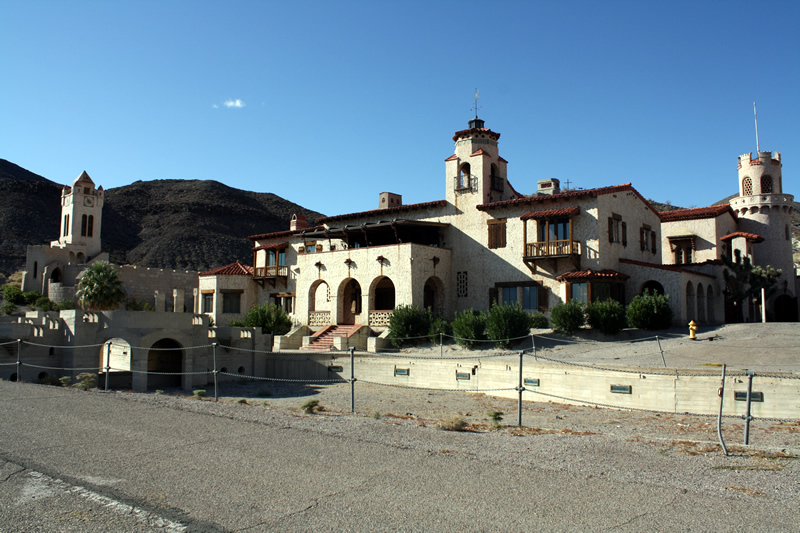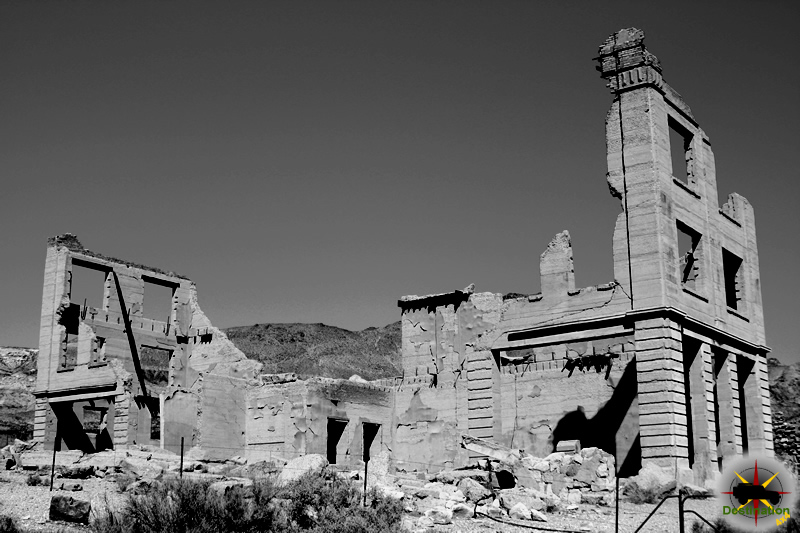
Joseph Isaac Clanton
Joseph Isaac Clanton, commonly knows as “Ike” Clanton was a notable figure in the American Old West, primarily recognized for his involvement in the notorious gunfight at the O.K. Corral. Born on March 1, 1847, in Calloway County, Kentucky, as Isaac Clanton, he grew up in a tumultuous time marked by the expansion and conflict of the frontier.

Early Life
Ike Clanton was the eldest of a large family that moved westward, eventually settling in Arizona. His father, Newman Clanton, was a prominent rancher and ranch hand, contributing to Ike’s early exposure to the rough and often violent life of the frontier.
The Clanton Family and the Cowboy Faction
Ike, along with his brothers and other family members, was part of a group known as the Clanton Gang, or the Cowboys. This group was a faction involved in various criminal activities, including cattle rustling and other illicit operations. The Clantons were known to have frequent conflicts with law enforcement and other factions in the region.
The O.K. Corral Gunfight
Ike Clanton is perhaps best known for his involvement in the famous gunfight at the O.K. Corral in Tombstone, Arizona, which took place on October 26, 1881. The gunfight was a pivotal event in the Earp-Clanton feud and involved notable figures such as Wyatt Earp, Virgil Earp, Morgan Earp, and Doc Holliday.
On the day of the gunfight, Ike Clanton and his brothers, along with other members of their faction, had a violent confrontation with the Earp brothers and Doc Holliday. The altercation lasted only about 30 seconds but became one of the most infamous shootouts in American history. Clanton, who had been verbally threatening the Earps, was disarmed and fled the scene. Although he survived the gunfight, the event marked a significant turning point in the ongoing conflict between the Cowboys and the lawmen.
Later Life and Death
After the O.K. Corral gunfight, Ike Clanton faced increasing challenges and threats. His involvement in the events surrounding the gunfight made him a target for both law enforcement and rival factions. In 1887, Clanton was killed in a gunfight with a lawman named Frank “Buckskin” Leslie in a dispute over a stolen horse.
Ike Clanton’s life and actions reflect the tumultuous nature of the Old West, characterized by lawlessness, frequent violence, and personal vendettas. His involvement in the O.K. Corral gunfight solidified his place in Western history, often remembered as a symbol of the frontier’s rough and dangerous era.
Las Vegas and Tonopah Railroad
The Las Vegas and Tonopah Railroad was a standard gauge railroad which operated along 197 miles between the town of Las Vegas and Goldfield, NV. Despite the name of the route, service from Goldfield to Tonopah is complete on the Tonopah and Goldfield Railroad.

History

Despite a verbal agreement with Francis Marion Smith in April, 1905, William A Clark incorporated the Las Vegas and Tonopah Railroad on September 22, 1905. By this time, Borax Smith graded about 12 miles of the track route for his operations in Lila C, or Ryan as it would later be known.
Following a no-trespassing order served to Smith, Clark initial started laying track up the valley from Las Vegas on the route graded by Borax Smith. Track reached Indian Springs from Las Vegas on March 1st, 1906. By June, 30th, 1906 rail is laid down all the way to Rose’s Well. The route to Rhyolite, Nevada is completed in December 1906. During the height of construction, the track gangs were pushing the track forward at a rate of about 1.5 miles per day and complete the route into Goldfield in November, 1907. A financial panic of 1907 caused the failure of the town of Rhyolite which served a major blow to the newly complete line.
The LV & T is merged with the Bullfrog Goldfield Railroad in 1914 when it operated some 15 locomotives. Between December 1906 and February 1st, 1917, daily train service hauled passengers, mail and freight between Las Vegas and Beatty. After February 1917, only three trains ran per week until 1919 when the railroad is closed and scrapped.
The Las Vegas & Tonopah Railroad laid one mile of track per day, then two miles of track per day, in its hurry to connect Rhyolite with the outside world. The first train from the Las Vegas & Tonopah entered Rhyolite at 7 p.m. on December 14, 1906, with about 100 passengers.
Rhyolite Train Depot Marker
Las Vegas to Goldfield Route

The Las Vegas and Tonapah Railroad was 197 miles long 23 stops along the way. The trip took about 8 hours to complete with food service only being offered at Rhyolite.
- Goldfield ( Mile 0 )
- T & G Crossing ( Mile 1)
- Red Rock ( Mile 4)
- Ralston ( Mile 17 )
- Stonewall ( Mile 21 )
- Wagner ( Mile 28 )
- San Carlos ( Mile 34 )
- Bonnie Claire ( Mile 41 )
- Midway ( Mile 43 )
- Petersgold ( Mile 59 )
- Mud Spring (Mile 65
- Original ( Mile 70 )
- Rhyolite ( Mile 74 )
- Beatty ( Mile 79 )
- Gold Center (Mile 81 )
- Chloride ( Mile 87 )
- Rosewell ( Mile 97 )
- Canyon ( Mile 109 )
- Amaragosa (Mile 122 )
- Charleston ( Mile 138 )
- Indian Spring ( Mile153 )
- Owens ( Mile 169 )
- Corn Creek ( Mile 174 )
- Tule ( Mile 182 )
- Las Vegas ( Mile 197 )
Summary
| Name | Las Vegas and Tonopah Railroad |
| Location | Clark County, Nevada Nye County, Nevada Esmeralda County, Nevada |
| Gauge | Standard Gauge – 4 feet 8.5 inches (1,435 mm) |
| Length | 197 miles |
| Years of Operation | 1906–1918 |
Related Articles

 Beatty Nevada State Historic Marker #173Beatty NSHM 173 is Nevada State Historical Marker number one hundred and seventy three five and is located just off of highway 95 in the… |
 Las Vegas and Tonopah RailroadThe Las Vegas and Tonopah Railroad was a standard gauge railroad which operated along 197 miles between the town of Las Vegas and Goldfield, NV.… |
 Ralston Station – Las Vegas and Tonopah RailroadRailroad logo from a 1910 Las Vegas and Tonopah Railroad timetable. Ralston was a minor station along the Las Vegas and Tonopah Railroad (LV&T), established… |
 Rhyolite Nevada – Nye County Ghost TownRhyolite is a ghost town location just outside of the Eastern edge of Death Valley National monument in Nye country, Nevada. Founded in 1904 by… |
 Rhyolite Train DepotThe town of Rhyolite boasted three train services using the Rhyolite Train Depot which is completed in June, 1908. The depot services the Las Vegas… |
 Tonopah and Tidewater RailroadExplorers of the Mojave Desert in southern California are bound to have heard the stories of the Tonopah and Tidewater Railroad. The Tonopah and Tidewater… |
References
Death Valley Gold Rush (Images of America)

From the mid-19th century to the 1930s, no place in America was more feared or mysterious than the stretch of desert on the California-Nevada border known as Death Valley.
While today Death Valley National Park is seen as a place of natural beauty and scenic wonders, there were once rumors of vaporous gases so toxic that birds flying overhead would drop dead instantly. One of the first Americans to encounter this dreaded land was William Lewis Manly, who left his Wisconsin home for California’s 1849 Gold Rush and who heroically saved those lost pioneers who would give Death Valley its name. Other pioneers in the early 20th century were Frank “Shorty” Harris, who made Death Valley’s biggest gold strike; the Hoyt brothers, who, in 1908, struck it rich in a place called Skidoo; and in the 1920s, a con man named C.C. Julian, who used the valley’s reputation to scam naive investors. There was a time when the entire country seemed to be consumed with news and tales of the Death Valley Gold Rush.
About the Author
Ted Faye is a documentary filmmaker, exhibit curator, and historical researcher on stories and people of the Death Valley region. Faye has worked with tourism boards on both the state and local levels to develop materials that tell the stories of their communities. He was a historian at US Borax, and many images from this book are from the Borax collection at Death Valley National Park.
Book Summary
| Title | Death Valley Gold Rush (Images of America) |
| Author | Ted Faye |
| Publisher | Arcadia Publishing |
| Pages | 128 Pages |
Virgil Walter Earp
Virgil Walter Earp ( July 18, 1843 – October 19, 1905) was born in Lincoln County, Kentucky, was a prominent lawman and frontier figure known for his role in the American Old West. As the eldest of the Earp siblings, Virgil took on a leadership role within the family, guiding his younger brothers Wyatt, Morgan, and James. A seasoned law enforcement officer, Virgil served as a deputy U.S. marshal and, later, as the town marshal of Tombstone, Arizona. His most notable moment came during the infamous Gunfight at the O.K. Corral on October 26, 1881, where he, alongside Wyatt and Doc Holliday, confronted a group of outlaws known as the Cowboys. Despite surviving the gunfight, Virgil’s tenure in Tombstone was marred by violence and personal loss, including the assassination attempt that severely injured him and ultimately led to the death of his brother Morgan. Virgil’s resilience and sense of justice left a lasting imprint on the lore of the Old West.

Early Life and Family
Virgil Walter Earp was born on July 18, 1843, in Hartford, Kentucky. He was the second of Nicholas and Virginia Ann Cooksey Earp’s five sons. The Earp family moved frequently during Virgil’s childhood, eventually settling in Pella, Iowa. Growing up in a large and adventurous family, Virgil, along with his brothers James, Wyatt, Morgan, and Warren, developed a strong sense of camaraderie and loyalty that would shape their future endeavors.
Civil War Service
In 1861, at the age of 18, Virgil enlisted in the Union Army during the American Civil War. He served with the 83rd Illinois Infantry Regiment and later transferred to the 17th Illinois Cavalry. His service was marked by bravery and resilience, traits that would later define his career as a lawman. After the war, Virgil returned to civilian life, married his first wife, Ellen, and started a family. Unfortunately, Ellen died shortly after the birth of their daughter.
Life as a Lawman
Virgil’s career as a lawman began in the 1870s. He held various positions across different towns, working as a constable in Prescott, Arizona, and as a deputy U.S. marshal. His reputation for enforcing the law with determination and fairness quickly spread. In 1879, Virgil moved to Tombstone, Arizona, where he would play a crucial role in one of the most famous events in Western history.
The Gunfight at the O.K. Corral
Virgil Earp’s most notable moment came on October 26, 1881, in Tombstone. As the city marshal of Tombstone, Virgil, along with his brothers Wyatt and Morgan, and their friend Doc Holliday, faced off against the Clanton and McLaury brothers in what became known as the Gunfight at the O.K. Corral. The confrontation, which lasted only about 30 seconds, resulted in the deaths of three outlaws and left Virgil seriously wounded. Despite his injuries, Virgil’s leadership and bravery during the gunfight cemented his place in the annals of the American West.
Later Years and Legacy
Following the gunfight, Virgil is held for a preliminary trail for his role in the gunfight which led to the death of three men. On November 19th, 1881, Virgil Earp, still seriously injured from the gunfight, testified from his bedside at the Cosmopolitan Hotel. He is exonerated on November 30, 1881 with the finding on Judge Wells Spicer.
Virgil’s troubles were far from over. In December 1881, he was ambushed and shot by unknown assailants, leaving him with a permanently crippled left arm. Despite this setback, Virgil continued to serve as a lawman, moving to California, where he worked as a law enforcement officer in various capacities, including city marshal of Colton and constable in Vanderbilt.
Virgil Earp passed away on October 19, 1905, in Goldfield, Nevada, at the age of 62. He was buried in the Riverview Cemetery in Portland, Oregon. His life, marked by courage, resilience, and a commitment to justice, left a lasting legacy in the history of the American West. Virgil Earp’s story, along with those of his brothers, continues to captivate the imaginations of those fascinated by the era of the Old West.
Virgil Earp in the news
 Los Angeles Daily Herald – December 30, 1882On December 30, 1881 the Los Angles Daily Herald broke the news of the Assassination attempt on Marshall Virgil Earp The Los Angles Daily Herald… |
 The Tombstone Epitaph, October 27, 1881The following is the original transcript of The Tombstone Epitaph published on October 27, 1881 on the infamous gun fight at the O K Corral… |
 Tombstone Daily Nugget, October 27, 1881The Tombstone Daily Nugget, October 27, 1881 described the the infamous Gunfight at the O K Corral between the Earps and the Clanton faction in… |
Earp Family Members
 James Cooksey EarpJames Cooksey Earp ( June 28, 1841 - January 25, 1926 ) James Cooksey Earp ( June 28, 1841 - January 25, 1926 ) was… |
 Morgan Seth EarpMorgan Seth Earp, born on April 24, 1851, in Pella, Iowa, was a notable figure of the American Old West, primarily recognized for his association… |
 Virgil Walter EarpVirgil Walter Earp ( July 18, 1843 – October 19, 1905) was born in Lincoln County, Kentucky, was a prominent lawman and frontier figure known for his… |
 Warren Baxter EarpWarren Baxter Earp ( March 9, 1855 - July 6, 1900 ), the youngest of the Earp brothers, was born into a family that would… |
 Wyatt Berry Stapp EarpWyatt Berry Stapp Earp (March 19, 1848 – January 13, 1929) was an American lawman and gambler who became a legendary figure of the Old… |
Statement of Albert Billickie in the Preliminary Hearing in the Earp-Holliday Case

Albert Bilicke became a successful hotelier and entrepreneur. He is best known for his role as a key business leader in Tombstone, particularly through his involvement in the development and management of the famous Tombstone Grand Hotel.
Bilicke’s connection to Tombstone began in the 1880s when he partnered with George R. Watt to establish the Grand Hotel, which opened in 1880. This luxurious establishment quickly became a social and economic hub in the town, attracting notable figures of the time, including lawmen like Wyatt Earp and Doc Holliday. The hotel was a symbol of the prosperity brought by the silver mining boom that had put Tombstone on the map.
Under Bilicke’s management, the Grand Hotel thrived until the decline of the silver mines led to economic hardships in the region. Despite these challenges, Bilicke remained an influential figure in Tombstone’s business community, known for his sharp business acumen and commitment to the town’s development.
Albert Clay Bilicke’s legacy in Tombstone is remembered as one of entrepreneurship, resilience, and a deep connection to the town’s early history. His contributions helped shape Tombstone during its most vibrant years, leaving an indelible mark on the community.
Statement of Albert Billickie
On this twenty-eighth day of November, 1881, on the hearing of the above entitled cause, on the examination of Wyatt Earp and J. H. Holliday; Albert Billickie, a witness of lawful age, being produced and sworn, deposes and says as follows:
Albert Billickie, Cosmopolitan Hotel, 409 Allen Street, Tombstone, Arizona, hotel keeper.
In response to questions:
[I] knew Tom McLaury by sight, and saw him on October 26th last, “walking down the south side of Allen Street and enter Everhardy’s butcher shop, and very shortly come out again, walk down the street a few steps further, cross Allen Street obliquely to the corner of Fourth Street. This was probably about 2 o’clock.”
(Q) State if you observed what change if any occurred between the time of his going into the butcher shop and the time of his coming out, with respect to his possession of any arms.
(A) I saw no arms on him, neither when he went into the butcher shop nor when he came out.
(Q) What was his appearance when he went in, and what was his appearance when he came out; with respect to the possession of concealed arms?
(A) When he went into the butcher shop his right-hand pants pocket was flat and appeared as if nothing was in it. When he came out, his pants pocket protruded, as if there was a revolver therein.
CROSS-EXAMINATION
(Q) You say in your examination in chief, that you only knew Tom McLaury by sight and had no personal acquaintance with him. How did it happen that you watched him so closely the different places he went and the exact position of his right-hand pants pocket when he went into the butcher shop and the exact form of a revolver in the same right-hand pocket when he came out?
(A) Every good citizen in this city was watching all those cowboys very closely on the day the affray occurred, and as he was walking down the street my attention was called to this McLaury by a friend and so it happened that I watched him very closely.
(Q) Do you know every good citizen in Tombstone, or did you on that day?
(A) I know not all of them, but a great many.
(Q) Do you know what the opinions of all good citizens of Tombstone were on that day by conversation or conversations with them about watching Thomas McLaury in this city, and if so, tell us who they were. [Question crossed, without comment.]
(Q) About how long did he stay in the butcher shop, and was he in your sight while in there?
(A) He was in the butcher shop but a few moments and was out of my sight from the time he entered until he again appeared. He then walked a few feet down Allen Street and crossed to the corner of Fourth and Allen and walked down Fourth Street. I did not see him alive anymore that day. Everhardy’s butcher shop is directly opposite the Cosmopolitan Hotel, and I was standing on the sidewalk in front of the hotel when I saw what I have related.
[Signed] Albert Billickie




